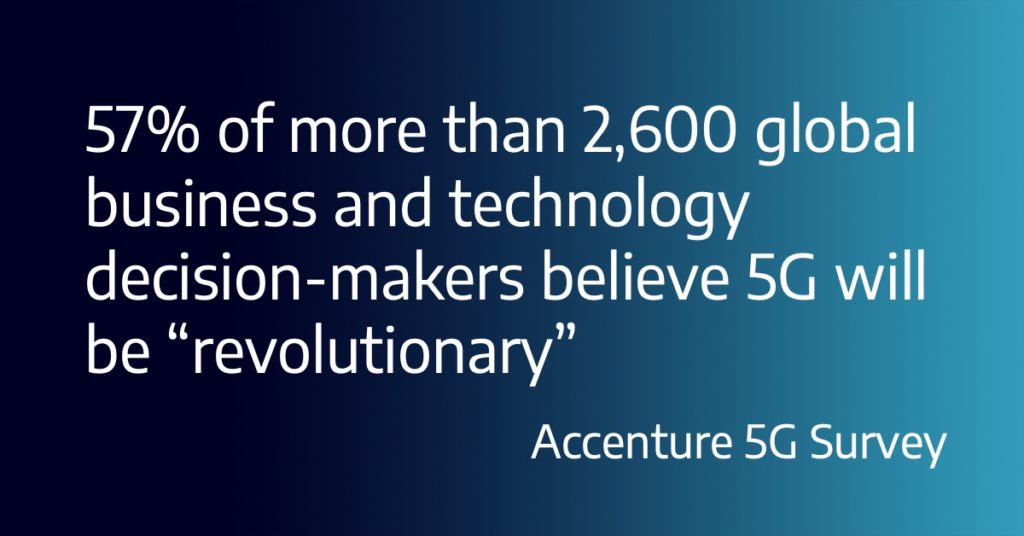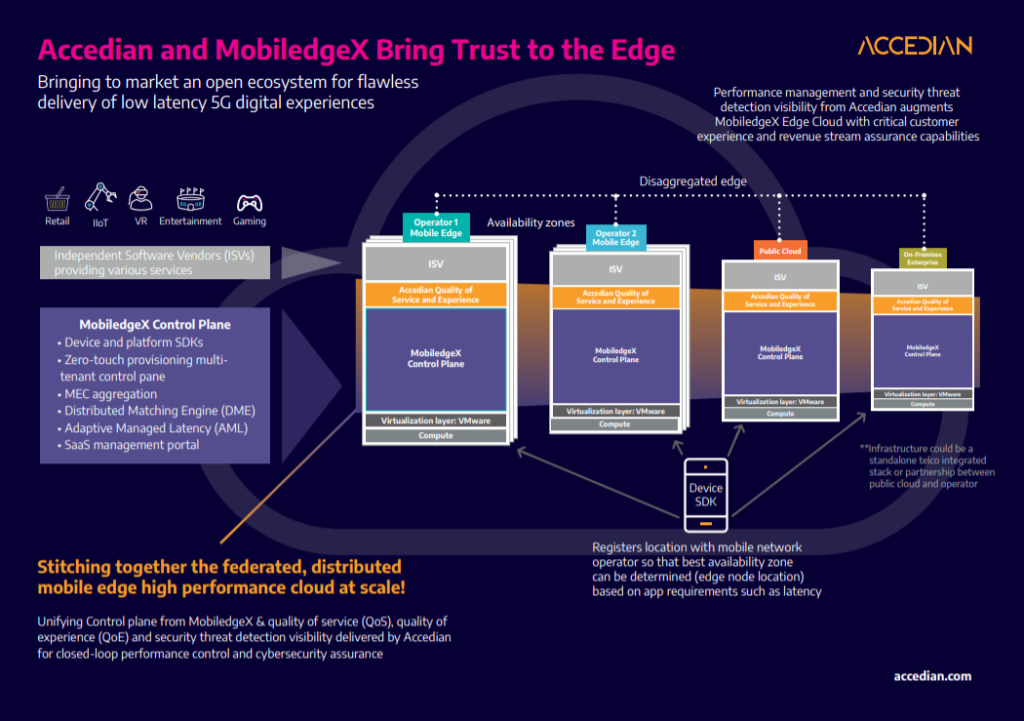Edge networking and edge cloud are often associated with 5G on the basis that it will be either
News feeds in recent weeks show that the topic certainly has the attention of the larger mobile operators. China Unicom, Deutsche Telekom, EE, KDDI, Orange, Singtel, SK Telecom, Telefónica and TIM have joined forces, in an attempt to make edge compute widely and easily available. With the support of GSMA, the goal is to have an interoperable edge platform that will make a local operator’s assets and capabilities – such as low latency, compute and storage – available to application developers and software vendors to serve enterprise clients.
Telco edge cloud solutions, like MobiledgeX, are open and inclusive, provide data protection and sovereignty mechanisms, and offer “carrier-grade reliability, security, trustworthiness”.
The idea is that ‘a standard mobile platform’ like this would be globally available to multinational enterprises so they could develop applications with consistent customer experience and performance quality backed by solid security and regulatory compliance.
Enterprises see the potential of edge cloud and 5G but need reassurance on security
According to an Accenture 5G survey, over half (57%) of more than 2,600 global business and technology decision-makers believe 5G will be “revolutionary”, while 79% expect the technology will have a significant impact on their business.

Enterprises are excited not just about the new applications and digital experiences they can offer customers, but about the ways their own operations and supply chains can be transformed with real-time logistics, inventory, and transport. From a technology standpoint, this involves migrating applications and software development to the cloud, and implementing IoT, edge and Industry 4.0 use cases. To achieve success with these initiatives, business applications must perform at scale with consistent security and speed or risk hurting brand and customer loyalty.
In the same Accenture 5G survey, over a third (35%) of respondents expressed concerns around the security of 5G, while 62% fear that 5G will render them more vulnerable to cyberattacks. The survey also revealed that many businesses are concerned about 5G costs, with 80% believing that the cost of managing their IT infrastructure and applications will increase.
Performance, security and an open ecosystem at the edge
While the main reason to consider edge computing is performance, performance is also the challenge. Edge-enabled applications that are designed to take advantage of performance at the edge will degrade rapidly if the infrastructure can’t meet the necessary service level agreements (SLAs). One of the difficulties of the edge is that you also need to distribute monitoring of the network access and edge cloud assets. Because this environment is no longer static, performance monitoring must be implemented in a more dynamic way.
Accedian and MobiledgeX have partnered to help carriers and enterprises deliver applications at scale with consistent user experience, performance and security at the edge, whether that’s Singapore, London, New York, or one of the thousands of access sites in between. The plan is to bring an open ecosystem for flawless delivery of low latency 5G digital experiences that meets the security and reliability requirements of the most latency-sensitive organizations. It’s about enabling the largest multinationals to write, distribute and publish applications at scale globally on a single unified,

In our new white paper, MobiledgeX and Accedian outline the promise of 5G, the drivers behind creating a new edge cloud for services and applications, and the end-to-end performance management and security visibility needed to make it a success.
Five things Accedian brings to edge cloud and 5G
- Quality of experience: how real users are experiencing application performance and network quality, visibility and assurance for any application anywhere at all times.
- Pinpointing where performance degradations occur in real-time: identify what’s causing problems at speed: is it the edge cloud, a remote data center, a public or private cloud or a network link? This capability is essential as slow applications hurt business productivity and user experience.
- Service assurance and service level agreements: independent verification of edge application performance. Accedian assures that enterprises can verify the performance they are getting from edge compute and 5G applications.
- Cybersecurity threat detection at the edge: suspicious and malicious threats embedded in the application and communications protocols must be identified in time to thwart their potential impacts to customers and security.
- Deep transactional forensic attestation: new low-latency edge compute applications will drive the need for real-time data to verify transactions at scale for audit and compliance and risk, e.g. what device is connected to which machine? What vehicle is connected to what infrastructure, etc? This transactional forensic data will be needed by industries such as insurance, reinsurance, law, investment banking, logistics, transportation, aerospace, as well as the supplier risk and compliance organizations.

 Improved delivery, better visibility: How Accedian and VMware are working together to help CSPs navigate the 5G world
Improved delivery, better visibility: How Accedian and VMware are working together to help CSPs navigate the 5G world
 Adding a new dimension of visibility to the Cisco Full-Stack Observability portfolio with Accedian Skylight
Adding a new dimension of visibility to the Cisco Full-Stack Observability portfolio with Accedian Skylight